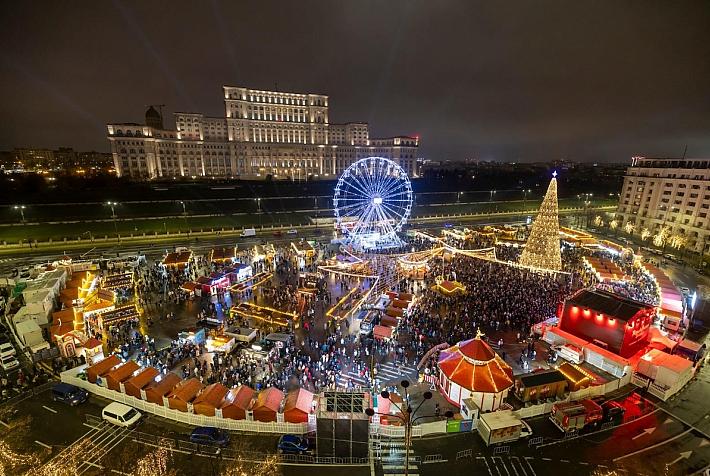Bucharest in one day: The old town (Centrul Vechi)


Track: Universitatii Square— Toma Caragiu St. — Ion Ghica St. — Doamnei St. — Eugeniu Carada St. — Lipscani St. — Smârdan St. — Stavropoleos St. — Poştei St. — Sf. Dumitru St. — N. Tonitza St. — Franceză St. — Curtea Veche (Old Court) — Covaci St. — Şelari St. — Smârdan St. — Lipscani St. — Sf. Gheorghe Square— Universităţii Square
Timing: one hour
More than six centuries ago, when the Ilfov watcher was overlooking the Giurgiu road from the survey tower close to Dambovita, the scenery must have been lean. A couple of huts, maybe some
water mills and a couple more chattels that made a so called village. The Vlasiei forests were surrounding the area, going deep and dark far beyond the distance. Only the brick survey tower was announcing the city set to appear, that has become the core of Bucharest. When ruler Vlad Tepes issued the September 20, 1459 paper mentioning the name of Bucharest for the first time, he set a mark for future generations to measure the age of Bucharest.
The town grew in time. At first, it was a small citadel in the 14th century. Then the citadel built by Vlad Tepes, using existing fortifications. As time went by and the city became a royal residence, more boyars started to move in, along with merchants and craftsmen, who set up the Inner Town. Then came the rolls, the confectioners, the tailors and all other craftsmen of those days. Later on, roads were built and inns were opened. In the 19th century came the hotels, along with elegant banking institutions.
There were earthquakes, fires, floods, enemy invasions, foreign occupations, wars, contagions which caused countless destructions. The city was erased on several occasions, but was reborn each time more powerful. New houses took over the old ones and embedded the old walls.
Bucharest, placed at the crossroads of the pagan Orient and the Catholic or Protestant Occident, has never had the impressive monuments Paris, London or Amsterdam had. It is no wonder a French visitor to Bucharest in 1574 said he was unable to find any decent building in the city.
The story of the Old Town, whose streets and monuments you will find along the dedicated track in the following articles about this part of town, is the story of a city in itself. We could even name it the city within the city, if we think about its strong personality which has been mirrorer in the contrast between this area and the surrounding ones.
The Old Town now has little of its hay days charm. There are, for sure, the old buildings. The street network has stayed in place around the three main streets: Doamnei, Lipscani and Franceza. For many years, that colorful street liveliness was gone. Today's Old Town is a world of steep contrasts: large buildings and recently revamped streets go along houses beaten by storms. Modest terraces see their reflection in the windows of luxury coffee places.
It's a medley of people, who rush out of the area, here and there tourists pop in to walk on the little streets in the area.
However, the Old Town is a world worth discovering and appreciating to its true value – it is the evidence of the city's beginning and its becoming.
romania-insider.com
(Photo source: Corina Saceanu/romania-insider.com)











